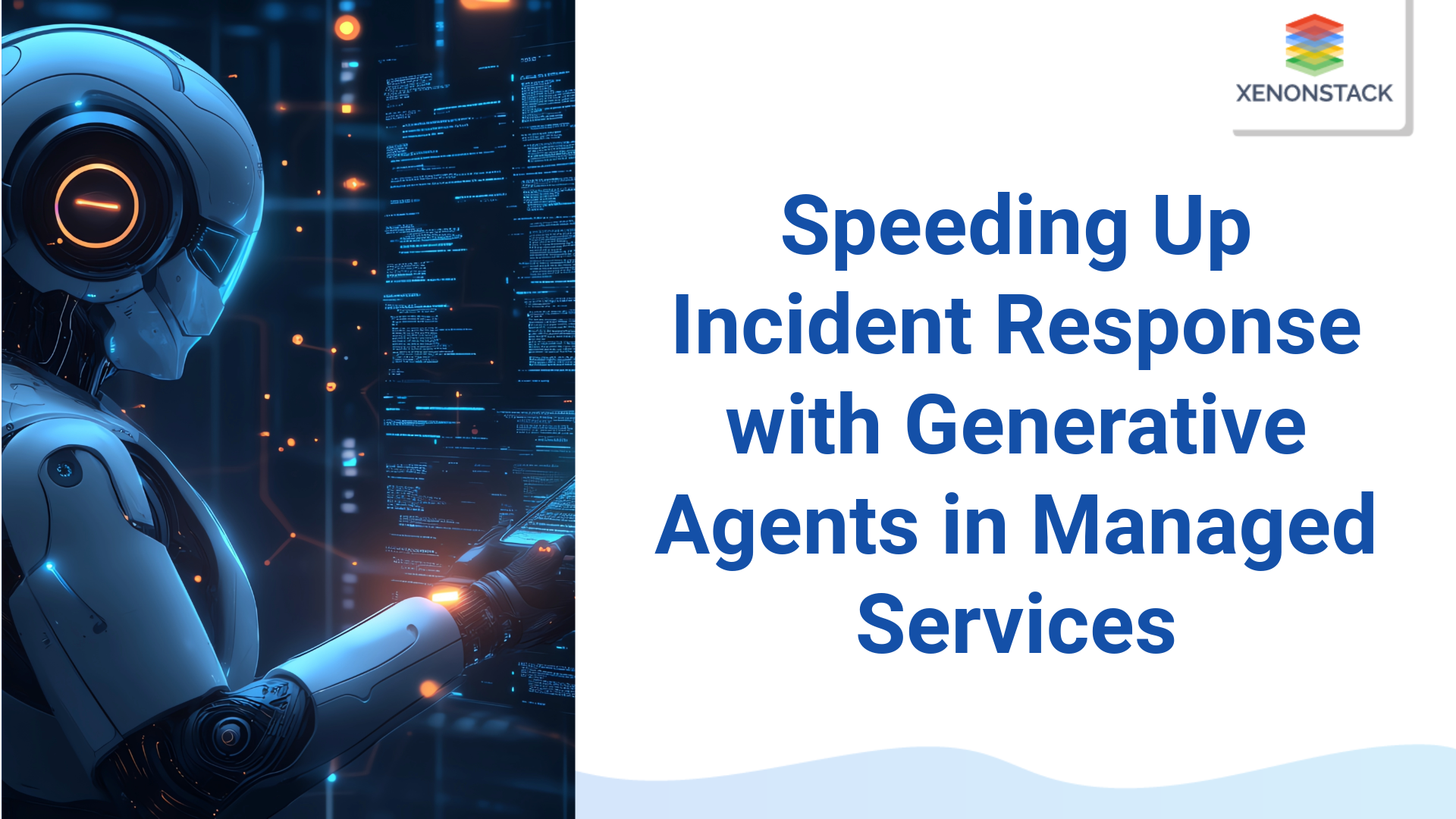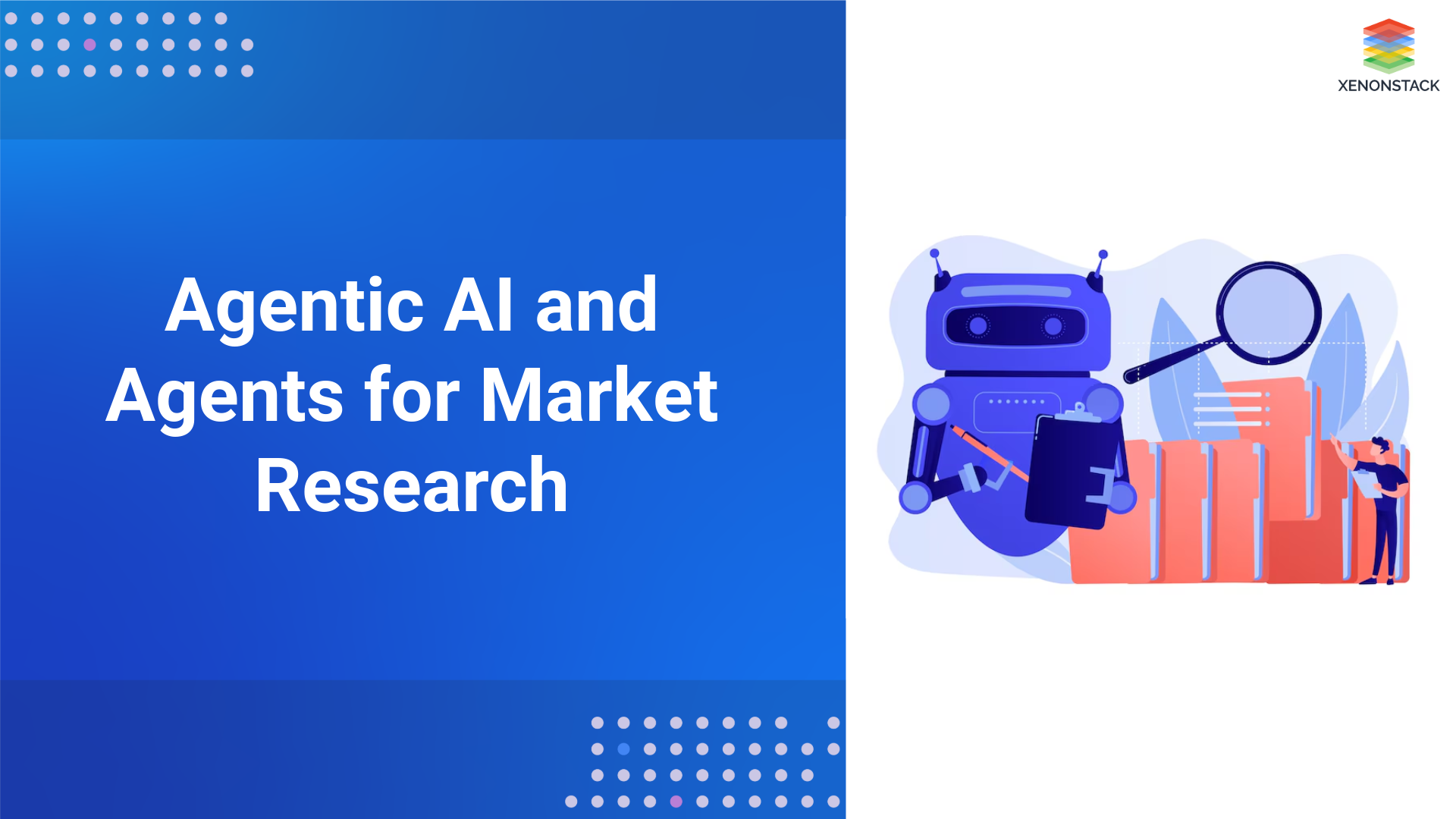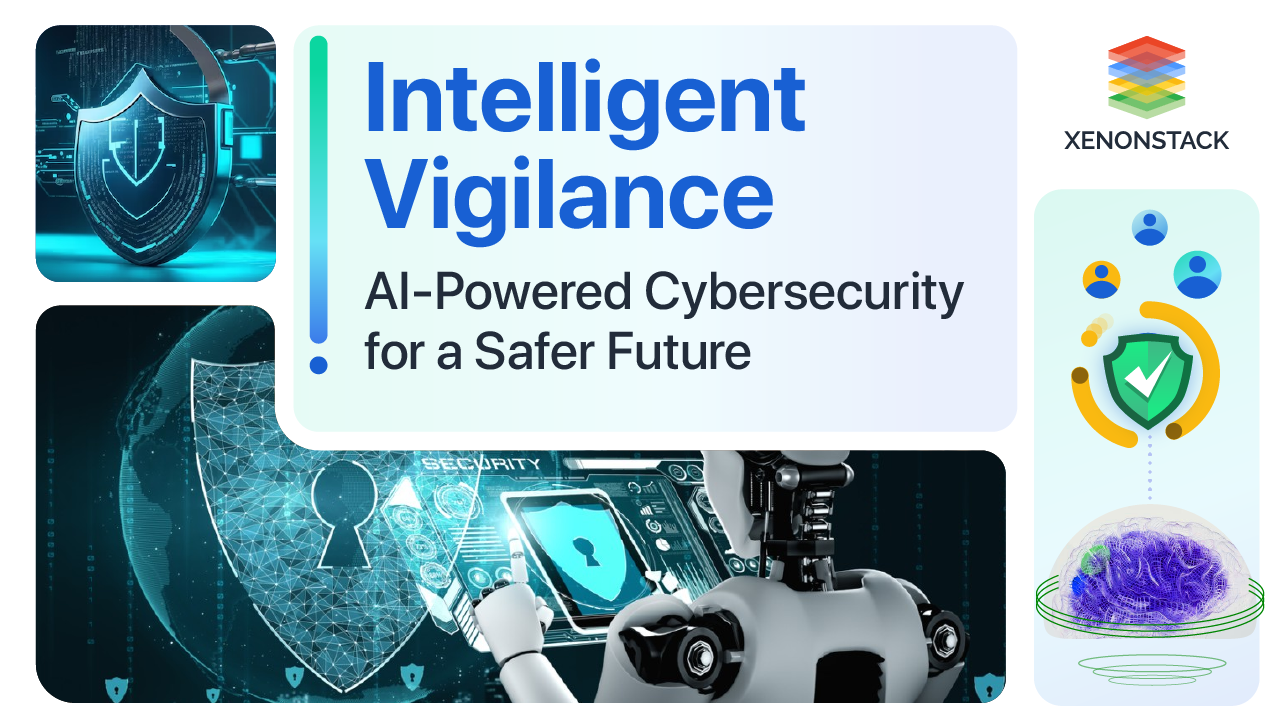In the contemporary world marked by swift digital transformations, organizations experience several obstacles in cybersecurity, system downtime, and service disruptions. Managed services providers (MSPs) assume a central position in such challenges by ensuring the entire business IT environment is robust, secure, and resilient. With the increased frequency and sophistication of incidents, it becomes imperative to employ mechanisms of detecting and responding promptly and effectively. Enter generative agents: advanced technologies powered by AI that put the processes of response to incidents and other related operations into a much better perspective.
Generative agents are content-producing artificial intelligence tools that can sift through big data to generate certain insights. When used in conjunction with their importance in managed services, this can change how organizations prevent, mitigate, and handle incidents. This blog post will discuss the innovation business reasons breakdown, generative agent features, managed services application implementations, outlook, pros and cons, and a brief wrap of their effects.
Business Requirements
Today, businesses have adopted an environment where technology is the order of the day, putting firms in greater danger than before. Effective operations are no longer the only aim of organizations; protecting consumers’ trust and staying within the legal framework is also a core concern. Accordingly, several pressing requirements have emerged:
-
Timely Incident Identification and Resolution
The organizations in question have to contain and rectify this kind of occurrence as fast as possible since failure to act may result in injury or damage. It is also worth noting that any potential internal security incident may take time to detect, and this, in turn, may result in losses and a tarnished reputation. For example, if there is a data breach and it is not remediated quickly enough, not only will the information already accessed be lost but also more data, incurring costs to fix the issue and also the trust of customers.
-
Economy
As earlier indicated, resources and time put into IT Contingency management can be extremely damaging to organizational finances. This, however, creates a scenario whereby companies try to cut costs on such strategies without reducing the efficiency of the organization’s operations. Many of the activities normally referred to as mundane can easily be taken care of by generative agents, bringing down the resource requirement of IT teams and allowing for better deployment of people.
-
Elasticity of Services
As an organization's size increases, so does the complexity of its IT network. Solutions must be elastic to cope with more difficult workloads and use cases. Development environments can also be elastic because they expand with new data and risks without redeveloping the entire system.
-
Risk Aversion
Management is not just concerned with ‘firefighting’ measures to manage issues after they have surfaced. Management is waiting for augmentation measures to manage issues before their occurrence.
Key Features of Generative Agents
Several factors make generative agents fit for enhancing managed services in incident response:
Evaluation of current and dynamic threats with a profusion of data. Generative agents have outstanding abilities, such as assessing a lot of information in a leveraged period. This development forces even human analyzers to consider the excessive information and data available. This becomes useful, especially when risks must be addressed at an elevated level before problems occur, especially in an organizational structure.
Determining The Causes Of The Events
In such a scenario, the system can easily justify the actions taken, including what the heck on personnel. Incident resourcing is not the same as generative agents, which prioritize different types of interaction to preserve resources for the most important interactions.
-
Analysing Trends The Macro agents can predict the occurrences because of their past experiences. Such a strategy would be appropriate for companies willing to manage advances in risks even before they are present.
-
Natural Language Processing
The Stylometric Generous agents emit and take in text that appears human and encourages conversations between the parties. This is greatly appreciated in the department, especially when all are needed to be there, as it supports rapid response within the team as they work on the issue.
-
Aegis Laboratory Asymmetrical Proxy
Such agents enhance operational performance, particularly in forecasting given events based on previous activity and the reaction to such activity, owing to artificial intelligence.
Deployment Strategy
The Process Of Integrating Generative Agents In Managed Services involves a lot of strategizing, tact and hard work in general. Here is a sequential method of incorporating these agents in response to incidents:
Understanding The Existing Infrastructure
The first step is to assess the incident response procedure and architecture in place and ensure compliance measures are considered. Discover what is lacking and how those needs can be addressed. This will serve as a starting point for evaluating the performance of the generative agents after the system has been established.
Defining Objectives
Articulate generative objectives for agents to achieve with them, e.g. improved response time and better accuracy in threat detection. Having explicit and quantifiable goals would help you in the course of implementation as well as in the assessment of the outcome.
Picking the Right Technology
Generative agent application platforms should be selected appropriately based on business needs. Pay attention to issues of scalability, integration, and vendor support. It is critical to ensure that technology is adapted to organizational change.
Conducting Pilot Studies
Conduct pilot studies to test the effectiveness of the generative agents in real situations before implementing them on a larger scale. These tests should create a feedback system where information can be retrieved and changes made before the larger-scale usage is done.
Training and Skill Building
A team must be adequately trained to operate generative agents effectively. This could mean training current members or even recruiting fresh blood with the required skills. The better the team, the more the generative agents will be used and incorporated appropriately.
Integration with Existing Workflows
The implementation of generative agents in incident response processes should take place in a stepwise fashion. They should complement the human effort rather than supplant it. A compromise with technology will help boost productivity while fully retaining the human element in decision-making.
Continuous Monitoring and Optimization
Implementing it is not enough; the utilization of generative agents should also be subjected to performance evaluation after the implementation stage. Assess the performance of generative agents used for specific tasks, such as the incidences of response, and improve them when necessary. Carrying out such assessments will always be important to identify existing weaknesses and ensure that the system keeps up with the organization's changing needs.
Feedback Loops
User feedback systems should be implemented to spot improvements. Improvements will be embedded using performance feedback. These mechanisms of continual enhancement will enable organizations to utilize generative agents effectively.
Ongoing Monitoring and Enhancement
Over-relaxation might be needed. Consequently, this trend is likely to be attained to a very high degree. A few key factors can explain these high-level capabilities:
-
Sophisticated artificial intelligence systems
As is already clear, the developers of these generative agents will strive to extend even the concepts of prediction and context comprehensibility. Thus, employing such boundaries would lead to applying very basic yet extremely advanced concepts to challenging tasks.
-
Optimizing for the Growth of IoT
As one more example, while the number of IoT devices is rising, generative agents will also expect them to stretch themselves to access these devices in countless incident management cases. The use of IoT within the institution will broaden the range of devices that the institution can harness and manage.
-
Growing Need for Cyber Resilience
The focus will not be on providing measures that are either simple deterrents or progressive in nature. It will be on designing the organization so incidents will come close to zero. In this regard, such strategies would be sought out using generative agents to minimize the effects brought about by the incidents.
-
Integrating Human and Computer Efforts
Mitigating all the apprehensions about the showcased technology will enable these platforms to be harnessed in generative agents where upper-level over-relaxation could be required.
Strengths and Weakness
Strengths
-
Shorter Time to Service Incidents: When detecting and treating accidents, generative agents help significantly decrease the response times, minimizing damage exposure.
-
Controlling Alarm Fatigue: These agents proportion the scope of alarms and improve the rates of active reporting.
-
Lower any operational Resistance: Adjustments to the current strategy and other measures leading to structural changes are time-consuming and, in some situations, very costly.
Attaines this simple increase in the Number of Generative Agents Engaged in Activities Completed: Such agents do not face difficulties in increasing the number of their types performing the same generated activities, which is beneficial for developing firms.
Weakness
-
Recurring Expense: The Onset of implantable supply active agents and resourcing processes is low, hence a high continuous generation cost for the institution regarding project and operational management.
-
Trained personnel: An organizational structure may be designed only by the individual.
-
Cost Factor: The introduction of more efficient mechanized modes of operation will undoubtedly result in the displacement of some workers.
Final Thoughts
The managed services market for incident response is changing dramatically with the advent of generative agents. They, to some extent, satisfy the inevitable business requirements of contemporary enterprises, from the speed of detecting and halting the incident to the entire management of the incident and, finally, law enforcement. Their introduction is not easy. However, such challenges are somewhat offset by harnessing the enumerated benefits of fortifying IT infrastructures.
The incessant change that comes with technology has made us wait for further sophisticated uses of generative agents that will enable them to address the issues in less time and in a more accurate way. This will call for organizations to embrace such changes because to win in today’s world full of uncertainties and complexities and to be proud of the digital age, they must do so. After all, developing incident managing systems cannot only be treated as a technical concern. It is also a problem of people’s management not being efficient rather than creating readiness for change in an environment that uncompromisingly demands change. In a situation where generative agents are adopted in an organization, the organization will not only assist the clients in incident management, but it will also be able to predict problems and eliminate dangers, thus making the internet safer.





